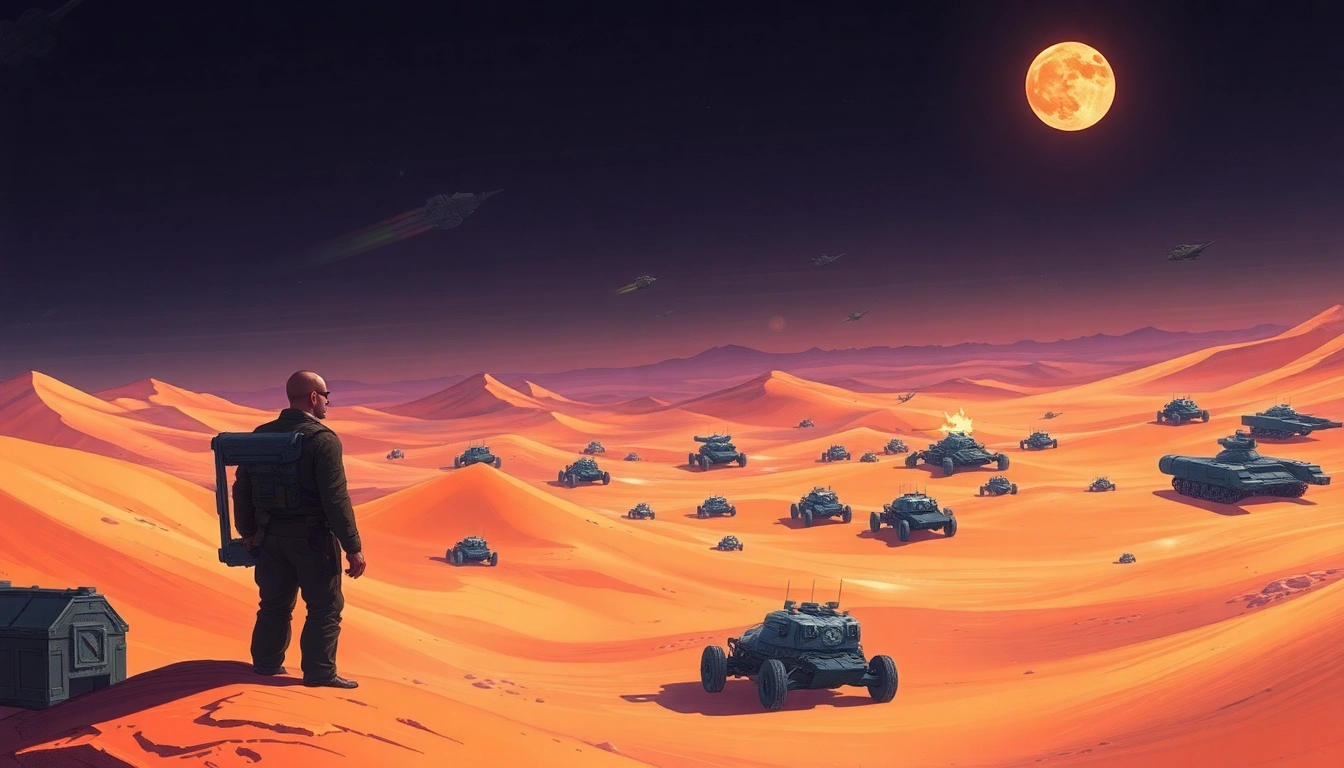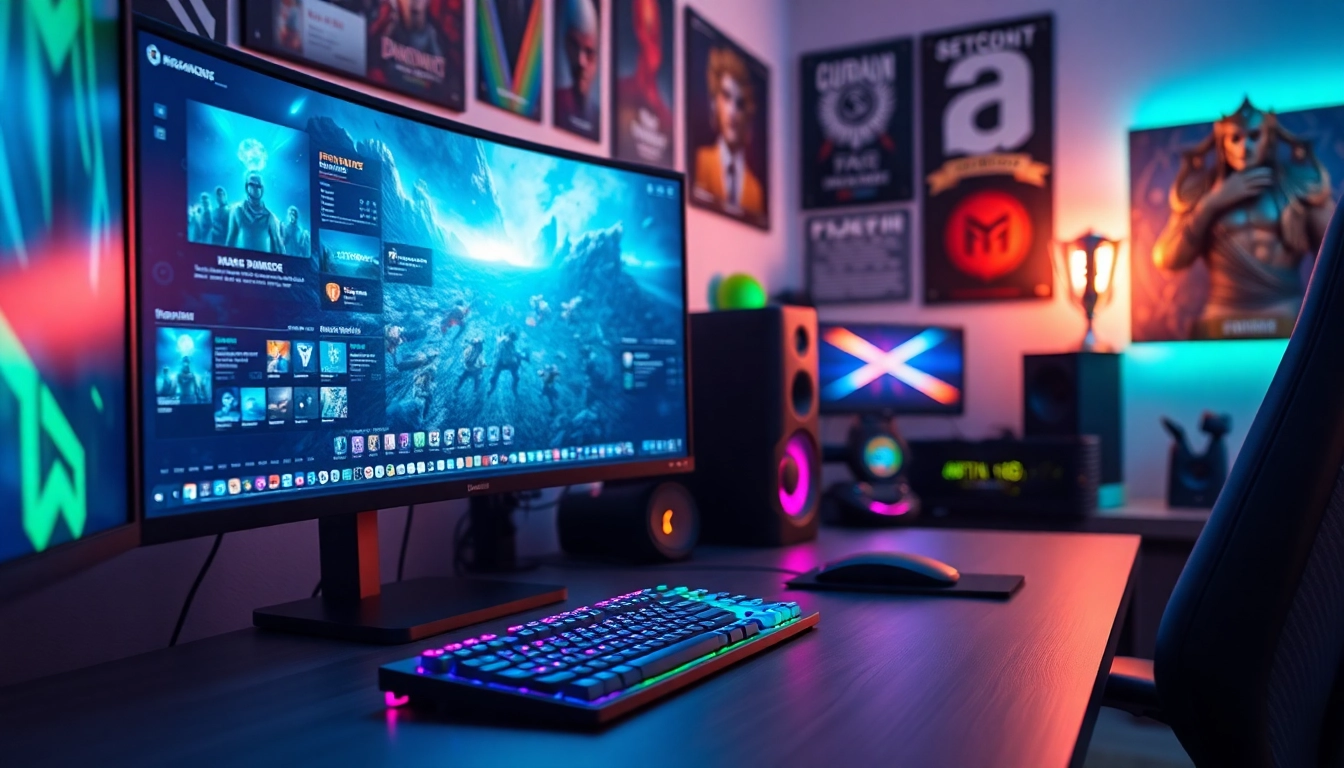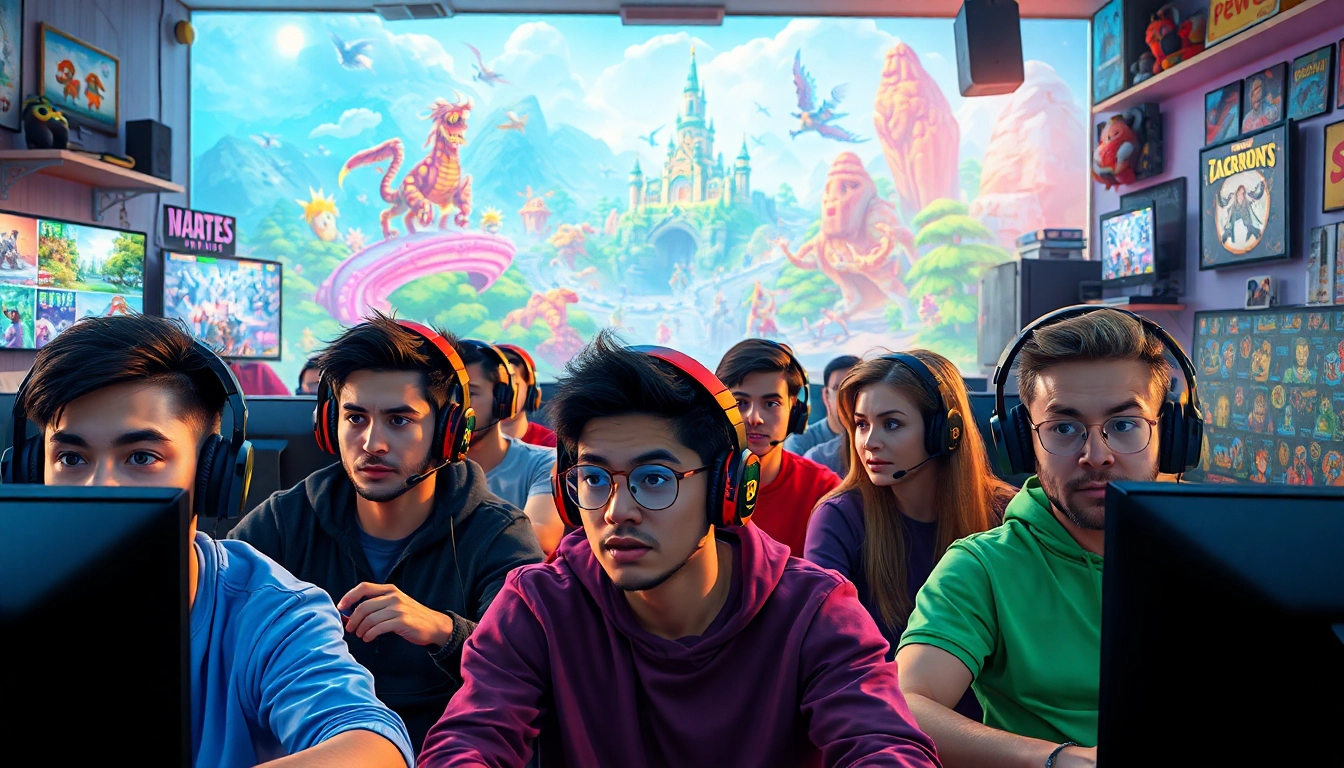Introduction to Dune 2 Game
When we think of groundbreaking video games that shaped entire genres, dune 2 game inevitably comes to mind. Released in the early 1990s, this classic real-time strategy game built the foundation for many mechanics and ideas we see in today’s gaming landscape. A combination of resource management, tactical planning, and immersive storytelling, Dune 2 set the stage for future developments in the strategy genre. In this article, we will explore what makes Dune 2 unique, delve into its gameplay mechanics, assess its graphics and sound design, offer tips for new players, and examine its legacy and impact on the gaming world.
What Makes Dune 2 Game Unique?
Dune 2 is often credited with inventing the real-time strategy genre as we know it today. Unlike its predecessors, Dune 2 introduced a remarkable blend of resource management and unit control, making it a pioneering title for strategic gameplay. Players must collect resources—namely the precious spice—while building bases and managing armies. This complex interplay between resource gathering and tactical warfare has only become more sophisticated in modern titles but began with the groundbreaking designs in Dune 2.
One standout feature of Dune 2 is its narrative depth, based on Frank Herbert’s iconic Dune universe. The game’s storyline and atmospheric elements draw players into a rich science fiction world, filled with political intrigue and the struggle for control over the desert planet of Arrakis. Each faction in the game—the House Atreides, House Harkonnen, and House Ordos—offers distinct playstyles and strategies which adds to the replayability.
A Brief History of Dune 2 Game
Dune 2 was developed by Westwood Studios and released in 1992. It was initially available on DOS, and it instantly garnered attention for its unique gameplay style and engaging narrative. The game served as a sequel to the 1992 game Dune, which was an adventure game rather than a strategy title. It drew inspiration from the successful Dune novels, as well as from the 1984 film adaptation.
At the time of its release, gaming was primarily dominated by turn-based strategy titles and adventure games. Dune 2’s introduction of real-time mechanics changed the industry forever. It set the standard for future strategy games with its emphasis on real-time engagements, base building, and resource management. The game went on to influence a myriad of successful franchises, solidifying its place in gaming history.
Comparing Dune 2 Game to Modern Strategy Games
When comparing Dune 2 to modern strategy games, we can appreciate how foundational concepts like resource collection and base management are deeply entrenched in the fabric of contemporary titles. Games such as StarCraft, Command & Conquer, and Age of Empires evolved from many principles first established in Dune 2.
However, while modern games boast enhanced graphics, advanced AI, and expansive online multiplayer modes, Dune 2’s charm lies in its simplicity and focus on strategy over spectacle. Players must engage at a fundamental level, utilizing tactics and foresight without the frills of current graphical enhancements or complex mechanics.
Gameplay Mechanics in Dune 2 Game
The gameplay mechanics in Dune 2 offer a balanced blend of strategy, resource management, and military tactics. Understanding these aspects is key to mastering the game.
Resource Management Strategies
Spice is the lifeblood of Dune 2; without it, the player cannot produce units or build structures. Successful players have developed several strategies for efficiently harvesting this valuable resource. One common method is to deploy multiple harvesters to collect spice from various locations. Players must also strategically position their base and harvesting operations to minimize risks from enemy attacks, especially since the desert sands conceal the dangerous Sandworms.
Moreover, balancing production and defense is crucial; players need to prioritize upgrading their technologies while ensuring their bases and units are adequately protected. Proper management of resources not only enables faster technological advancement but also contributes significantly to winning battles against opponents.
Building Your Base Effectively
Base building is a core gameplay mechanic in Dune 2. Players must think critically about their base layout to maximize efficiency. For example, placing production facilities close to the spice fields allows for quicker deployment of units. Additionally, establishing defensive structures, such as turrets, in strategic positions can deter enemy incursions.
As the game progresses, players should consider the ongoing threats posed by rival houses and adapt their base layout accordingly. Building multiple bases can also provide strategic advantages and serve as backup locations for resource extraction and defense. Effective base management can often mean the difference between victory and defeat.
Warfare Tactics and Unit Control
Warfare in Dune 2 is about more than just sheer numbers. It involves strategic thinking and efficient unit control. The game features a variety of units, each with its unique strengths and weaknesses. Knowing when to deploy certain units, how to position them, and when to retreat is vital for achieving success.
Players can use terrain to their advantage, ambushing enemies or utilizing hidden paths to outmaneuver opponents. Coordinating units effectively during combat while managing reinforcements from the base can lead to overwhelming victories. Furthermore, creating diverse armies composed of multiple unit types enhances tactical options during engagements.
Graphics and Sound Design in Dune 2 Game
Dune 2’s graphics and sound design play a critical role in immersing players in its universe. Despite its limitations due to the technology of its time, the graphical presentation effectively captures the aesthetic of Herbert’s world.
Visual Style and Artistic Presentation
The visual style of Dune 2 features a distinctive 2D isometric perspective that allows for a strategic overview of the battlefield. The use of vibrant colors highlights the harsh desert environment and the diverse units, from infantry to unique vehicles. The graphical limitations of the early ’90s offered a unique charm, and players often find nostalgia in its pixel art style.
Furthermore, the design of key elements, such as the various factions and their unique structures, is representative of the Dune lore. Even with its simplistic graphics compared to modern standards, it effectively conveys the essence of the narrative, enabling players to feel connected to the immersive universe.
Sound Effects and Music
Sound design in Dune 2 complements the gameplay experience, with an atmospheric soundtrack that captures the essence of a sci-fi epic. The game’s sound effects, from the hum of machinery to the cries of combat, envelop players in a sense of urgency and immersion. Each faction has its unique sound profile, adding to the overall atmosphere of diversity and conflict.
The music is particularly noteworthy, resonating with the themes of intrigue and struggle that run throughout the Dune saga. Although the soundtrack may seem simplistic by today’s standards, it effectively enhances the gameplay experience.
Comparative Analysis with Contemporary Games
When evaluating Dune 2’s graphics and sound design against contemporary games, it becomes evident that while Dune 2 may lack the visual fidelity and audio sophistication of modern titles, it has a distinct aesthetic that has aged gracefully. Many modern real-time strategy games prioritize stunning graphics at the expense of narrative depth and gameplay complexity.
In contrast, Dune 2’s unique stylistic choices and soundscapes serve its narrative and gameplay, creating a rich atmosphere that resonates with players even decades later. Its success lies not just in its technical aspects, but in its ability to communicate themes, character, and environment effectively.
Tips for New Players of Dune 2 Game
If you are new to the Dune 2 experience, mastering its intricacies can initially be daunting. However, with the right approach, you can thrive in the harsh world of Arrakis.
Getting Started with Dune 2 Game
As a beginner, it’s essential to familiarize yourself with the foundational gameplay mechanics. Begin by selecting a faction that aligns with your preferred playstyle. Each house (Atreides, Harkonnen, Ordos) has distinct abilities and units that will suit different strategies.
Furthermore, taking the time to learn the interface and user controls can significantly enhance your gameplay experience. Utilizing tutorials or guides available online can help speed up this process. Start with smaller engagements to learn the ins and outs before diving into larger campaigns.
Essential Strategies for Winning
Success in Dune 2 is predicated on perfectly balancing offensive and defensive strategies. Prioritize resource management by allocating your harvesters effectively, building defenses as you expand, and ensuring you have a diverse mix of units.
Don’t forget to scout enemy positions to understand their strategy and perhaps execute an ambush. Additionally, always keep an eye on your unit’s health and morale—retreating when necessary can prevent a total loss of forces.
Common Mistakes to Avoid in Dune 2 Game
One common pitfall for new players is neglecting their defenses while focusing solely on offense. It’s crucial to remember that becoming too adventurous can leave your base vulnerable to counterattacks. Also, mismanaging resources can result in significant setbacks in technology upgrades and unit production, which are critical for success.
Furthermore, be mindful of unit placement during battles. Only deploying units into combat without strategic positioning can lead to chaotic and inefficient engagements. Learning these lessons early can prevent frustration and enhance your overall gaming experience.
Legacy and Impact of Dune 2 Game
The legacy of Dune 2 extends far beyond its initial release. Its impact on the gaming landscape is profound, serving as a foundational pillar for real-time strategy games in the years that followed.
The Influence on Future Real-Time Strategy Games
Many modern games draw inspiration from the gameplay mechanics of Dune 2. The resource management, base-building, and tactical warfare elements it introduced have been iterated upon and enhanced in franchises such as Command & Conquer and StarCraft. These games owe a debt to Dune 2 for laying the groundwork for what would become staples of the genre.
Moreover, the iterative evolution stemming from Dune 2 can be observed in how modern titles are designed. The balance between economic management and military strategy continues to be a centerpiece of many popular games.
Fan Community and Modding Scene
To this day, the Dune 2 fan community remains highly active. Numerous fan-created mods and remasters pay tribute to the original game while updating it for modern audiences. These projects keep the spirit of Dune 2 alive, introducing new generations of players to its gameplay and story.
Fans have taken it upon themselves to expand upon and enhance the original content, showcasing the game’s enduring popularity and legacy within the gaming community. Whether through forums, fan sites, or social media, Dune 2 continues to foster connections among enthusiasts.
Where to Play Dune 2 Game Today
For those looking to experience the original Dune 2, several platforms offer access, including modern browsers through emulation. Many of these options are optimized to run seamlessly on contemporary systems, ensuring that the charm of the classic game remains intact. Additionally, there are various fan projects that preserve and enhance the experience for both new and returning players.
With its rich history, innovative gameplay, and lasting influence, Dune 2 remains an essential title for strategy game enthusiasts. Whether you are revisiting it or diving in for the first time, its timeless appeal ensures continued relevance in the ever-evolving gaming landscape.



